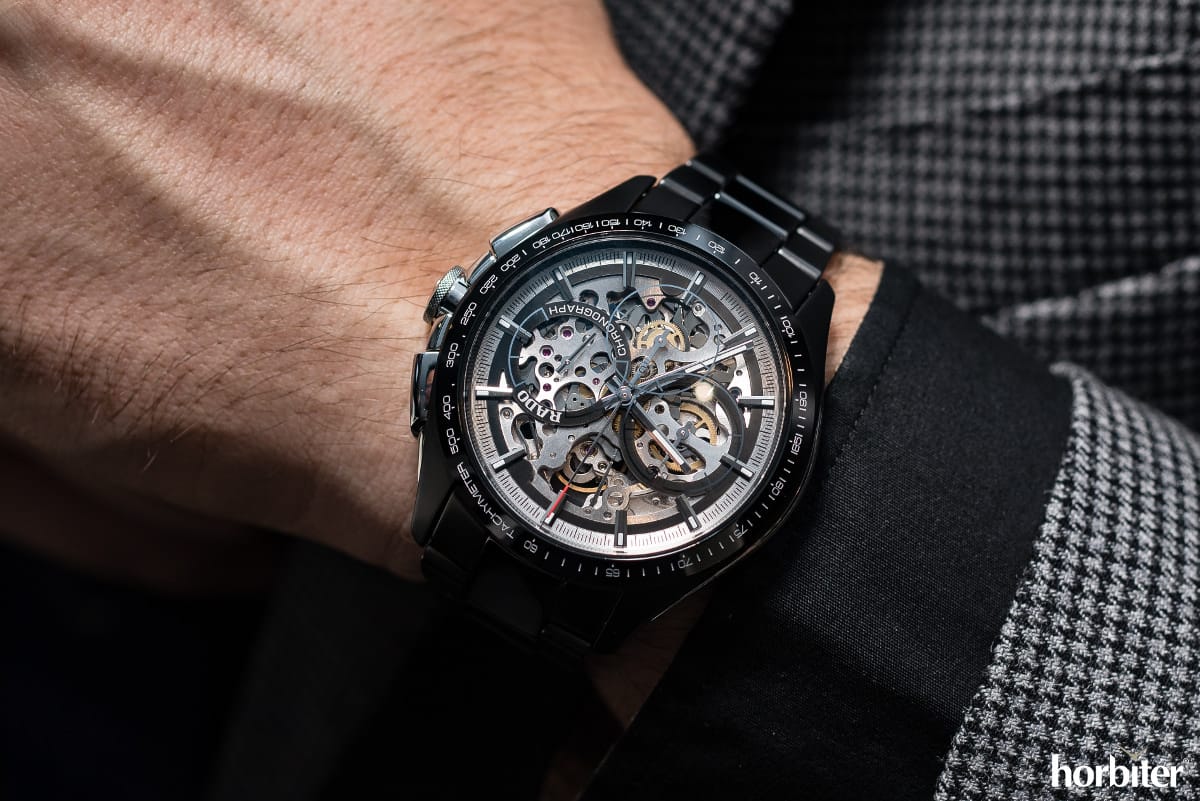The skeletonized dial is a decoration or an ornament that considerably raises the price of a watch without necessarily bringing along any real mechanical complication, even though the market already features skeletonized complicated and highly-refined timepieces crafted by haute-horlogerie manufacturers, some of which come from the same group that includes Rado too.
However, we should consider what has happened recently; alongside expensive and hand-made solutions, technology has allowed manufacturers to lower production costs and thus spread the use of some complications, like the tourbillon for example, which were once exclusively reserved for wealthy collectors.
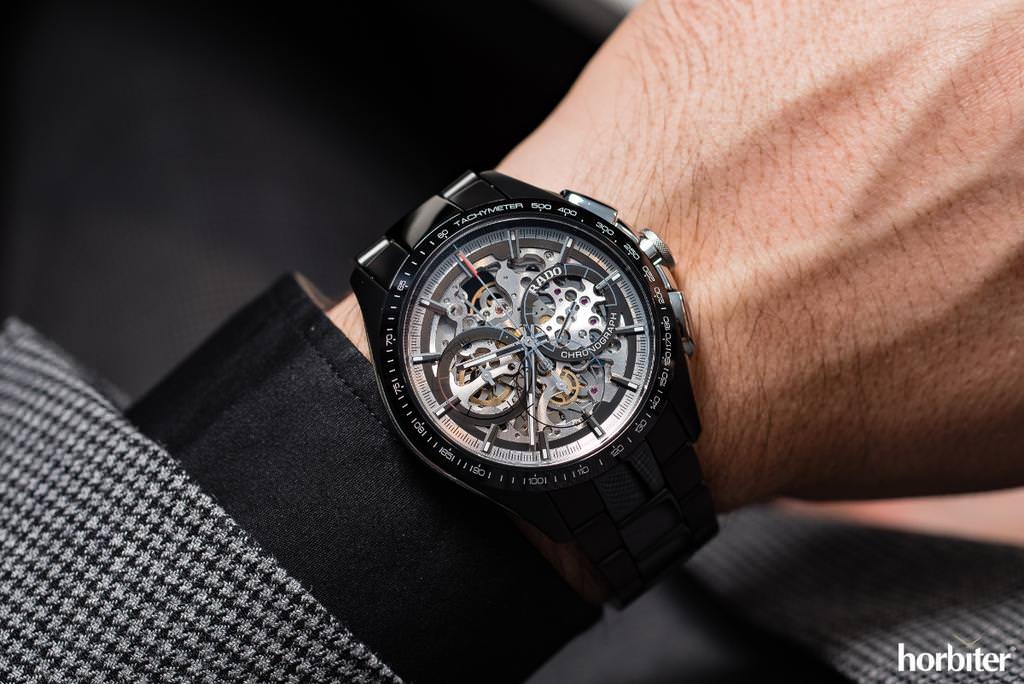 Industrial processes are currently being replaced by manual ones, thus making certain ‘pleasures’ accessible to the masses; this, however, does not mean that the added value of complications and refinements is getting lost.
Industrial processes are currently being replaced by manual ones, thus making certain ‘pleasures’ accessible to the masses; this, however, does not mean that the added value of complications and refinements is getting lost.
The Rado HyperChrome Skeleton Automatic Limited Edition was a surprise in itself; first of all because the day when we were supposed to have our photo-shooting in a private room at Baselworld I was not present, so I am evaluating a watch that I could not wear myself, but that I coud only admire through the photos taken by our photographer (and I have to admit that these pics give full justice to the watch, considering that skeletonized watches are among the most difficult watches to photograph – and to “read” too -).
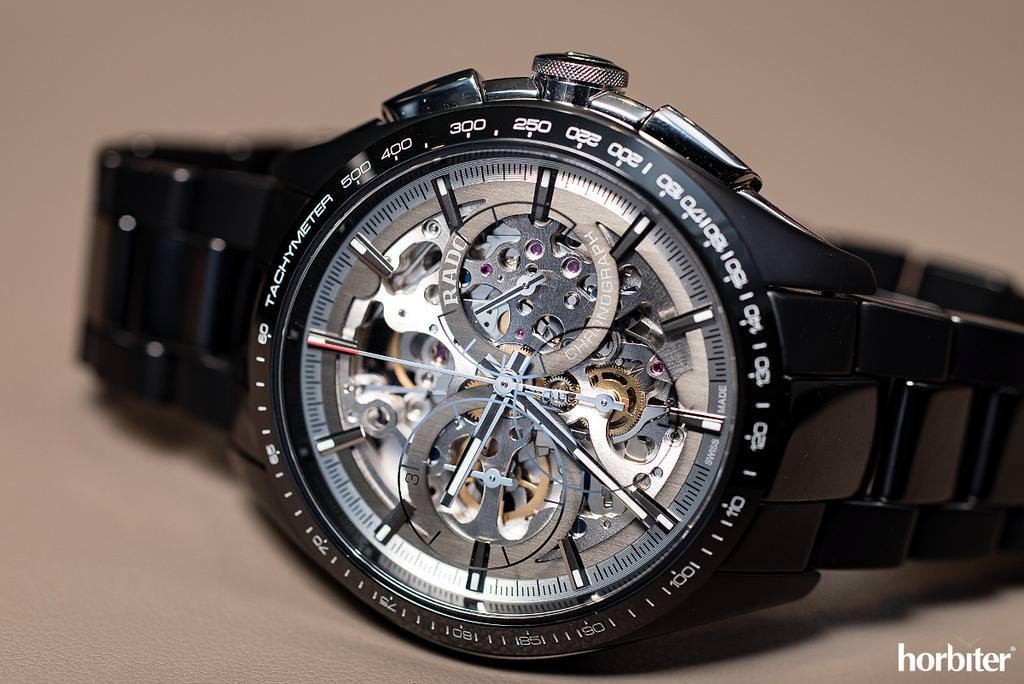 When I received the photos and I started to study this timepiece I had the feeling that I was seeing a chronograph created through the partnership with the Grand Prix world. It is quite obvious that this watch glows with a strong racing component as far as the crafting of the dial is concerned, including the positioning of the Rado logo and the “Chronograph” writing located on one of the chronograph counters.
When I received the photos and I started to study this timepiece I had the feeling that I was seeing a chronograph created through the partnership with the Grand Prix world. It is quite obvious that this watch glows with a strong racing component as far as the crafting of the dial is concerned, including the positioning of the Rado logo and the “Chronograph” writing located on one of the chronograph counters.
We are fully aware that Rado has no connection with Formula 1 racing tracks or any other sports car championship, but the DNA of this watch is that of a chronograph that is much more sporty-looking than any other HyperChrome Chronograph, and you can find plenty of those on Horbiter® where you are just spoiled for choice.
You don’t go for a skeletonized watch for its readability, and this Rado watch is no exception to the rule, but rather for the charm that comes from the ability to see the gears of the movement through the entirely CNC–machine–crafted main plate; a compulsory technical choice because it would be odd to see a Rado decorated like a Breguet, considering the innovation message that the brand must convey and its general positioning.
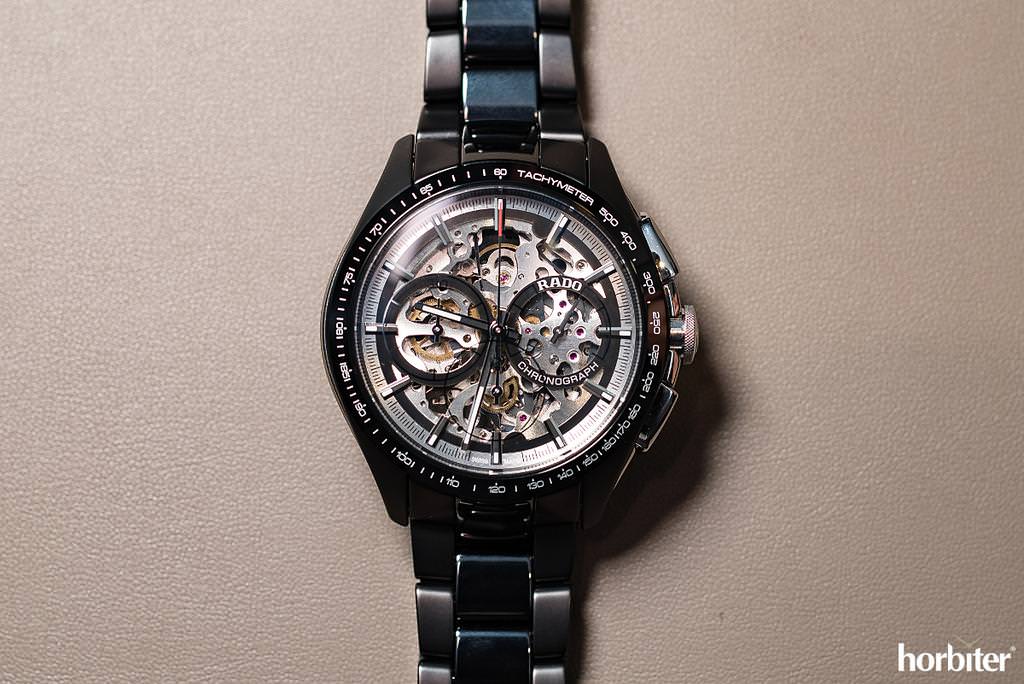 Attention is immediately drawn to the colors matching that is the result of different materials matching; it is widely-known that the case crafting of a chronograph-watch-hands-on-horbiter/" target="_self" rel="noopener">HyperChrome is particularly complex and troublesome because the machining tolerances of the central monobloc must be extremely precise to guarantee a perfect matching with the chrono buttons, the crown and the central steel inserts.
Attention is immediately drawn to the colors matching that is the result of different materials matching; it is widely-known that the case crafting of a chronograph-watch-hands-on-horbiter/" target="_self" rel="noopener">HyperChrome is particularly complex and troublesome because the machining tolerances of the central monobloc must be extremely precise to guarantee a perfect matching with the chrono buttons, the crown and the central steel inserts.
All of these elements have to be superficially hardened up to avoid the material risk of an increase in production waste. It is the chromatic result, however, that has proven particularly successful because the designers have basically adopted two different shades of color that allowed them to fully focus on the dial and the movement crafting.
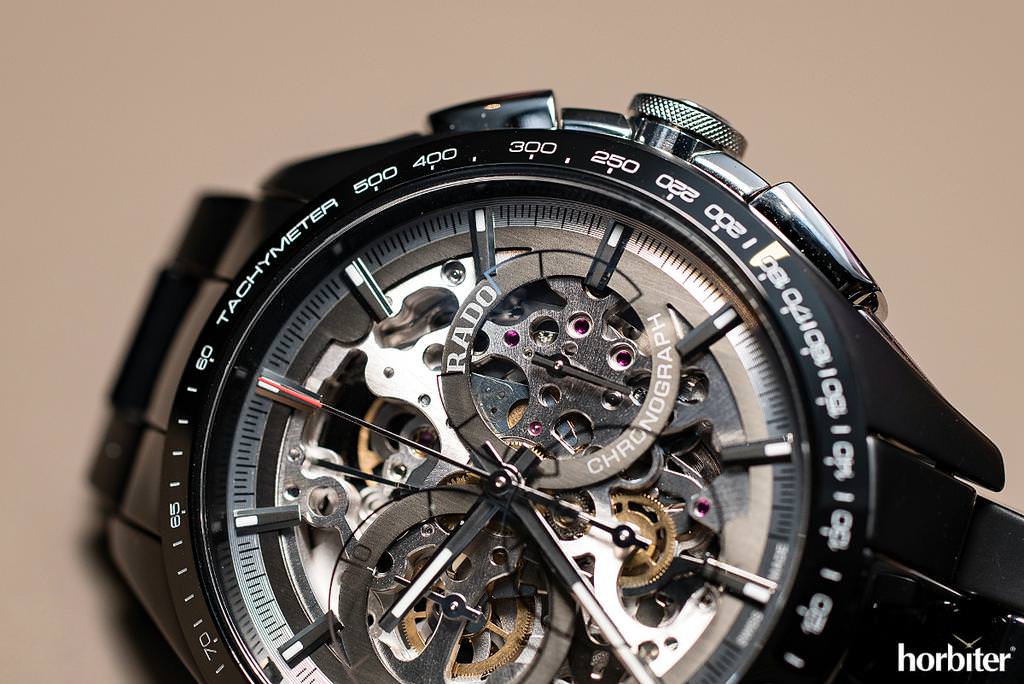 I believe that those designers have somehow exaggerated by trying to combine too many variations of color and material, while losing sight of the fact that simplicity is often the best solution. The black tone of the case is also a color that has been historically associated with Rado and its ceramic case since its launch on the market.
I believe that those designers have somehow exaggerated by trying to combine too many variations of color and material, while losing sight of the fact that simplicity is often the best solution. The black tone of the case is also a color that has been historically associated with Rado and its ceramic case since its launch on the market.
This is a rather smart aesthetic touch that Rado successfully applied to other latest-generation HyperChrome watches too; the main idea is that of bringing out only two of the existing counters by virtually transforming the Skeleton Automatic Limited Edition into a bi-compax chronograph.
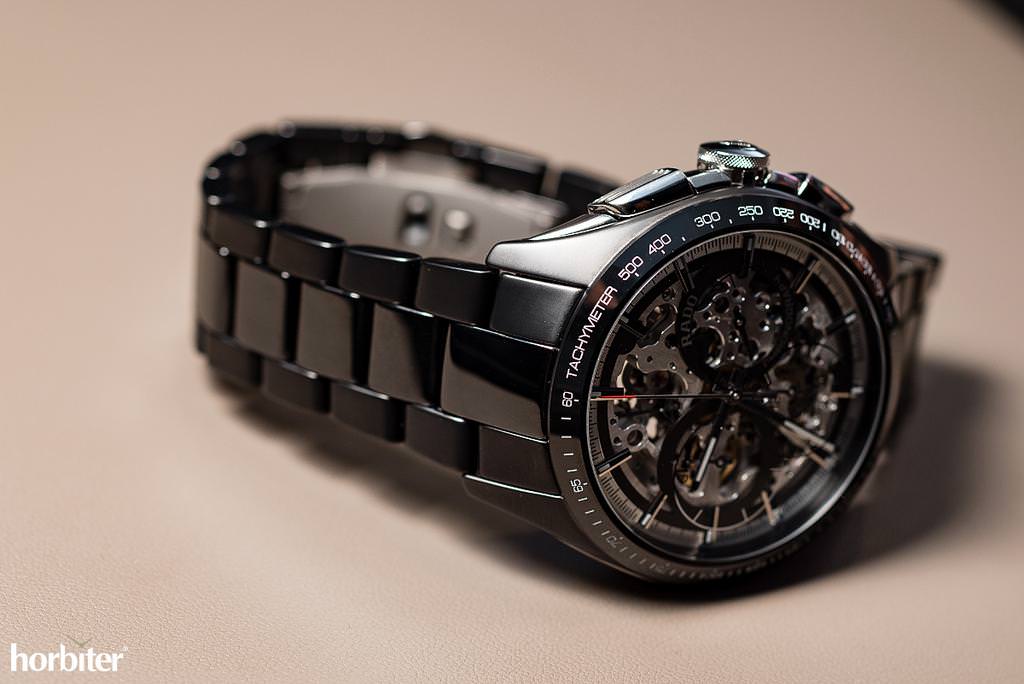 To be more precise the real counters are those inserted at 3 and at 9 o’clock and they are also the only counters featuring a true scale because they form what remains of the dial, the counter located at 6 o’clock, on the other hand, only uses a serigraphy on the sapphire crystal as its virtual scale.
To be more precise the real counters are those inserted at 3 and at 9 o’clock and they are also the only counters featuring a true scale because they form what remains of the dial, the counter located at 6 o’clock, on the other hand, only uses a serigraphy on the sapphire crystal as its virtual scale.
The two counters join the small parts ring with its twelve applied baton indexes that rest their inner end on an empty space; this is one of the effects that is most commonly associated with a skeletonized dial because it transmits the feeling that the movement hovers within the box.
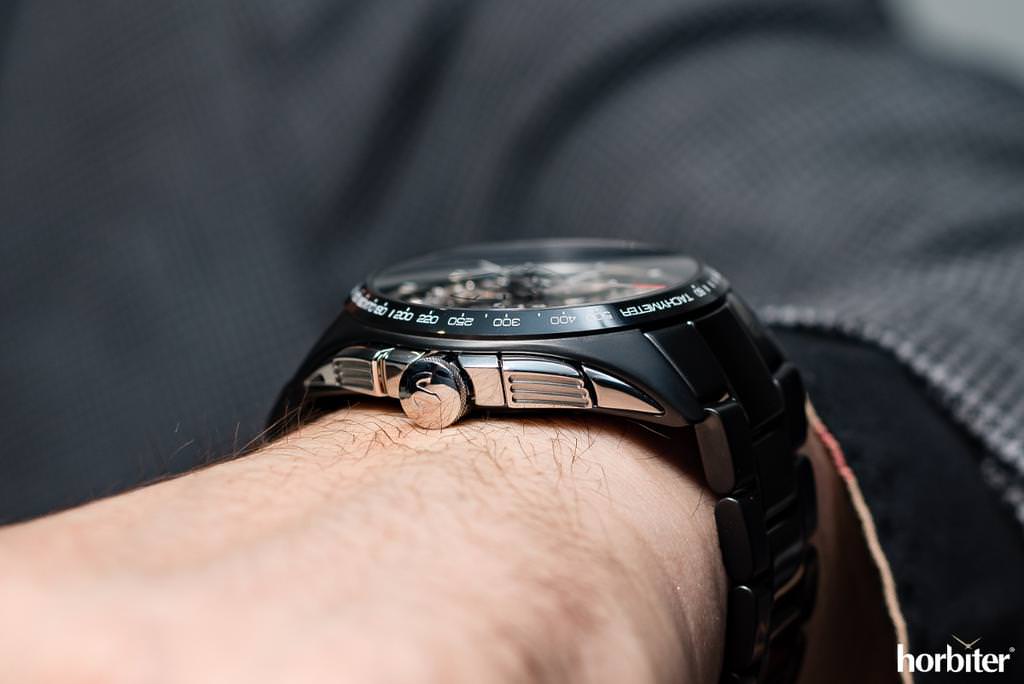 The Rado HyperChrome Skeleton Automatic Limited Edition is 45mm wide in diameter and 13mm thick, it is the top of the range watch of the entire brand and not only of the HyperChrome collection.
The Rado HyperChrome Skeleton Automatic Limited Edition is 45mm wide in diameter and 13mm thick, it is the top of the range watch of the entire brand and not only of the HyperChrome collection.
The timepiece adds in new characteristics to the existing standard features of a HyperChrome – like the exceptional crafting of the case (I would like to stress again that the ceramic bezel with its lacquer inserts is a crafting masterpiece in itself) – and the quality of being extremely comfortable around the wrist (the ceramic material is able to adjust to your natural body temperature).
The crafting of the dial and the movement is not out of place (the classical origins of the skeletonized structure would suggest otherwise). The only real negative side of the whole set is its weight; a small Achilles’ heel of the HyperChrome chronograph. The retail price of the 2018 Rado flagship model takes into consideration all the brand’s effort to further raise the bar and it stops at the €7,150-threshold.
(Photo credit: Horbiter®)
Gaetano C @Horbiter®
